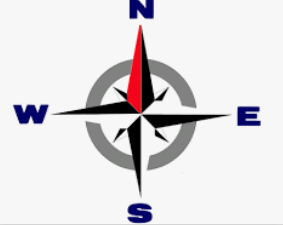Worksheet Solutions: Left Right - 1 | EVS for Class 3 PDF Download
Section A: True or False.
(i) The chapter "Left Right" discusses the four main directions, which are East, West, North, and South.
Ans: True
The chapter discusses the four main directions: East, West, North, and South.
(ii) A map is a physical representation of a location's specific characteristics.
Ans: False
A map is a symbolic representation, not a physical representation, of a location's characteristics.
(iii) The Sun rises in the west and sets in the east direction.
Ans: False
The Sun rises in the east and sets in the west direction.
(iv) North and South are not opposite directions.
Ans: False
North and South are indeed opposite directions, as mentioned in the chapter.
(v) Directions on a map can help us find and locate different places accurately.
Ans: True
Directions on a map can assist in finding and locating different places accurately, as explained in the chapter.
Section B: Fill in the Blanks.
(i) There are four main directions, namely East, West, __________, and South.
Ans: North
The four main directions are East, West, North, and South.
(ii) A map is a symbolic representation of a location's specific characteristics, typically drawn on a __________ surface.
Ans: flat
Maps are typically drawn on flat surfaces to represent locations symbolically.
(iii) The Sun rises in the __________ and sets in the west direction.
Ans: east
The Sun rises in the east and sets in the west direction.
(iv) To reach Ruchira's school, she has to take the first __________, then left, then again a right, and finally the last right turn.
Ans: right
To reach Ruchira's school, the directions involve taking a series of right turns, as mentioned in the chapter.
(v) Directions on a map help us understand and __________ a map.
Ans: read
Directions on a map assist in understanding and reading a map accurately.
Section C: Answer the Following Questions.
(i) How many main directions are discussed in the chapter "Left Right"?
Ans: Four main directions are discussed in the chapter: East, West, North, and South.
(ii) What is the purpose of directions on a map?
Ans: Directions on a map help individuals understand and locate various places accurately.
(iii) What is the correct order for reaching Ruchira's school as mentioned in the chapter?
Ans: The correct order to reach Ruchira's school, as mentioned in the chapter, is to take the first right, then left, then again a right, and finally the last right turn.
(iv) Where does the Sun rise and set, according to the chapter?
Ans: The Sun rises in the east and sets in the west direction, as stated in the chapter.
(v) What is the purpose of using symbols on a map?
Ans: Symbols on a map are used to represent and convey information about specific features, landmarks, or characteristics of a location in a symbolic way.
|
62 videos|326 docs|48 tests
|
FAQs on Worksheet Solutions: Left Right - 1 - EVS for Class 3
| 1. What is the concept of left and right in the context of the article? |  |
| 2. How can one improve their understanding of left and right? |  |
| 3. What are some common difficulties children face when learning left and right? |  |
| 4. Are there any strategies or techniques to help children learn left and right? |  |
| 5. Is it normal for children to have difficulty with left and right? |  |





















